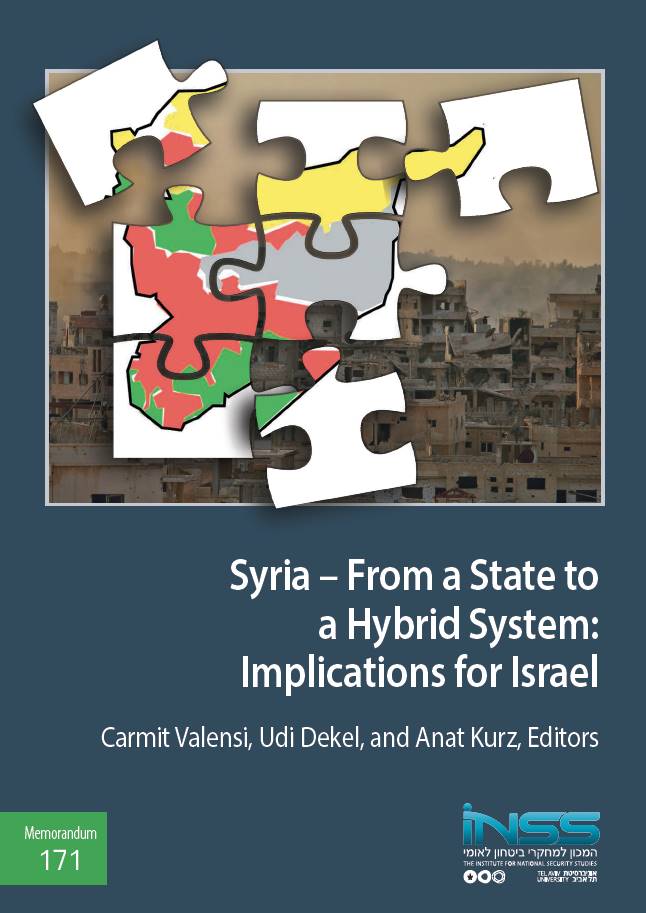Publications
Tel Aviv: Institute for National Security Studies, 2017

During the civil war in Syria, the functioning of the country’s state system was fundamentally undermined, and essential questions have been raised regarding the shaping of a future state order in its territory and the implications of the trends evolving in this arena for Israeli national security. This memorandum offers answers to these questions.
It can be assumed that the state’s framework and a central government will be preserved in Syria, due to the large number of parties having an interest in this, including Russia, the United States, the countries of the Middle East, and the majority of the local population. Nonetheless, the internal Syrian system is likely to be left with “hybrid” features, since years of war and the crystallization of different competing forces in this divided country will make it difficult for the central government to achieve broad legitimacy and institutionalize effective governance throughout all its territory. Therefore, it is expected that different forces in Syria—some in sectarian and ethnic enclaves (Alawite, Sunni, Kurdish), and others in chaotic regions with an active Jihadist presence—will continue to take form and operate. It has been estimated that the relations between enclaves will be characterized by competition—sometimes hostile and at other times cooperative—between them and the formal government. With the passage of time, Syria may undergo a transition from a hybrid situation to a federative order and then to an increasingly strong central government, under the condition that it allows the political participation of the population.
Israel needs to develop responses to the many challenges it faces in the Syrian arena, especially given the accelerated establishment of Shiite militias and Iranian dominance on the ground. It needs to pursue understandings and operational coordination with Russia; maintain strategic coordination with the United States over the future of Syria, and increasingly engage the United States in the settlement process there that goes beyond simply the dismantling of the Islamic State; formulate a joint strategy with Jordan, with American backing, to establish a joint zone of influence in southern Syria; and expand the aid it provides and its relations with Syrian communities in the Golan Heights in order to ensure a buffer zone between Israel and hostile elements and a basis for islands of stability in this complex arena. At the same time, Israel will, from time to time, need to use military force to prevent the transfer of weapons to Hezbollah and the military solidification of Iran and its proxies in the Syrian-Lebanese region.
================================================================
Table of Contents
Introduction
Guiding Principles of the Analysis and the Working Method
The Strategic Factors Shaping Possible Scenarios
The Scenarios
Alawite Rule
Sunni Rule
A Federative/Decentralization Structure
Autonomous Units
The Continuation of Hostilities
Syria the Day After: A Hybrid Political Order
A Reality of Multiple Scenarios
Features of Unity
The Hybrid System in Syria: Implications and Recommendations for Israel
Israel’s Political and Security Interests
Principles of Israeli Policy
Limitations and Obstacles
Hard Power Versus Soft Power
Establishing Cooperative Initiatives
Conclusions
Settlement or Continued Fighting—Are the Conditions Ripe for an End to the War?
The Writing on the Wall
Notes


